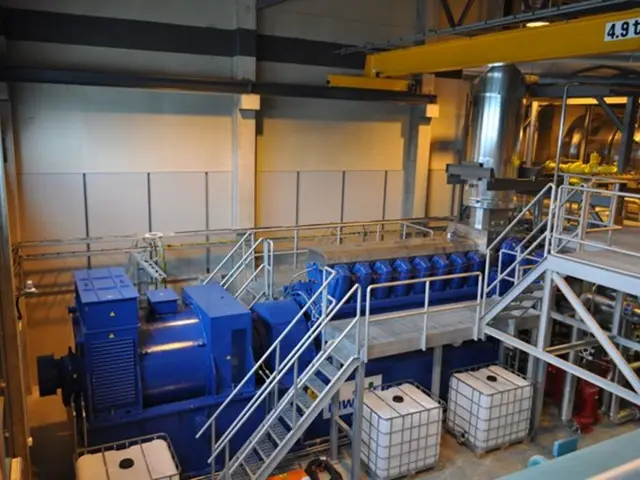Iran Air Flight 291 Disaster Investigation: Uncovering the Causes
On a bleak January 21, 1980, Iran Air Flight 291, a routine passenger service from Mashhad to Tehran, ended in a devastating crash into the Alborz Mountains during its approach to Tehran. A heartbreaking outcome - all 128 souls on board met their end, making it the deadliest aviation disaster in Iran's history at the time.
Flight Details and Aircraft Information
The fated flight was operated by a Boeing 727-86, registration EP-IRD, an aircraft manufactured in 1968 with three Pratt & Whitney JT8D-7B turbofan engines. This aircraft had been in service for over a decade.
Sequence of Events Leading to the Crash
Air traffic controllers were on strike that day, leading to numerous flight cancellations. The strike ceased at 16:00 local time, allowing resumption of flights. Flight 291 departed from Mashhad at 17:40, carrying 120 passengers and eight crew members.
At 18:52, as the aircraft approached Tehran, air traffic control cleared the crew for a direct approach to runway 29 at Mehrabad Airport. However, at around 19:05, the crew was instructed to execute a 360-degree turn to align with the Varamin non-directional beacon. During this maneuver, the aircraft veered off-course by 17 miles. Despite the first officer's observation that the beacon was indicating an incorrect radial, the captain failed to take corrective action. At 19:11, the aircraft struck the Alborz Mountains, approximately 29 kilometers north of Tehran, losing all on board.
Investigation Findings and Probable Causes
The crash investigation identified several key factors:
- Inoperative Navigation Aids: Both the Instrument Landing System (ILS) and ground radar at Mehrabad Airport were non-functional, severely hampering the crew's ability to execute a safe approach.
- Pilot Error: The flight crew deviated from the approved Air Traffic Service (ATS) route and executed the 360-degree turn without proper clearance from air traffic control, contributing to the navigational error.
- Adverse Weather Conditions: The approach was conducted in difficult conditions, including fog and snow, further complicating navigation and visibility.
Legal and Regulatory Aftermath
Following the disaster, several aviation officials faced manslaughter charges, highlighting the gravity of the safety lapses in aviation.
Impact on Aviation Safety and Regulations
The crash of Iran Air Flight 291 sparked significant changes in Iran's aviation industry. It underscored the need for:
- Improved Training: Enhancing pilot training programs to ensure strict adherence to standard operating procedures.
- Infrastructure Upgrades: Investing in reliable and functional navigation aids to support safe flight operations.
- Tightened Regulatory Oversight: Strengthening aviation authorities' ability to enforce compliance with safety standards and operational protocols.
These measures aimed to prevent the recurrence of such tragedies and bolster the overall safety of air travel within the region.
Lessons Learned from Past Tragedies
In the 1980s, aviation safety measures were constantly evolving to address various challenges. General safety improvements included:
- Detailed investigations into accidents, identifying specific causes, and contributing to the development of new safety protocols.
- Advancements in pilot training, particularly the use of simulators, to improve the ability of pilots to handle emergency situations.
- Enhancements in air traffic control systems and procedures, reducing the risk of collisions and other incidents.
- Continuous improvements in aircraft design, focusing on enhancing reliability and safety, and regular maintenance checks to ensure airworthiness.
The Iran Air Flight 291 crash, like other aviation disasters, served as a vital learning opportunity, contributing to the shaping of safer skies for future generations.
Final Thoughts
The Iran Air Flight 291 disaster underscores the importance of robust training, reliable infrastructure, and stringent regulatory oversight to ensure the safety of passengers and crew. It serves as a grim reminder of the intricacies and risks inherent in aviation and the urgent need for continuous improvement in safety measures to prevent such tragedies.
Aviation safety authorities recognized the need for enhanced training, infrastructure upgrades, and regulatory oversight following the devastating crash of IranAir Flight 291, underscoring the significance of such changes to safeguard the lives of passengers and crew in the aviation industry. The tragedy, however, also highlighted the crucial role of finance in maintaining aviation safety by ensuring the allocation of funds for necessary improvements in equipment and training programs. This unfortunate incident serves as a poignant reminder of the interconnectedness of aviation safety, transportation, and finance.








